The First Real International Invention: Steam Engine (Part 1)
The progress in science and technology has given impetus to the development of human history, and now we see endless streams of cars and neon-flickering tall buildings in modern cities. An important step in speeding up the development of human society is the invention of steam engine. From then on, the footsteps of human beings have gotten faster and faster.

L.S. Stavrianos, the author of A Global History: From Prehistory to the 21st Century, said, “We cannot exaggerate too much the historical significance of steam engines”. The emergence of steam engines freed human being from such primitive power as human and animal powers, realized machine production and led the human being go into a steam age.
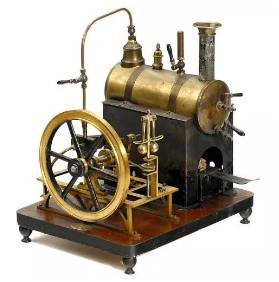
In WEM’s Permanent Exhibition Hall 2 titled “Moving with Progress”, a steam locomotive is exhibited in form of 3D printed model.
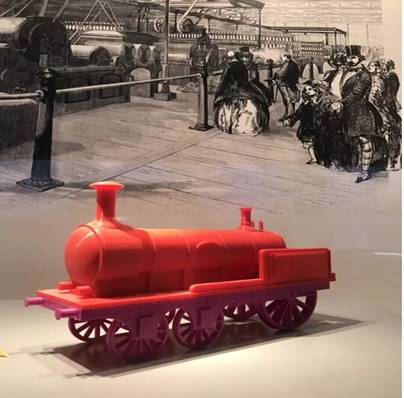
3D Printed model of Crampton Locomotive
Steam Engine

The Great Exhibition of 1851 in London
At the first World Expo in London in 1851,dazzling steam engines became the favorite of the Crystal Palace and the staple of the exhibits. From the early Watt’s engine to Evan’s high-pressure steam engine, a retrospective exhibition attracted engineers and visitors from all around the world. 46 meters on the northwest of the Crystal Palace is the Expo’s power room, in which 8 boilers with a total of 800 horsepower sent high pressure steam to mechanical exhibition area through an underground pipe with a diameter of 22 centimeters. The well-known Nesmith showed its latest steam hammer and hydraulic press. Field demonstrations were made on site on numerous cranes, textile machines, printing machines, threshing mills, envelope machines, lathes, circular saws, which were driven by steam engines, showing different charms. The clang of gears and the rhythms of belts just coincided with the melody of industrial age.
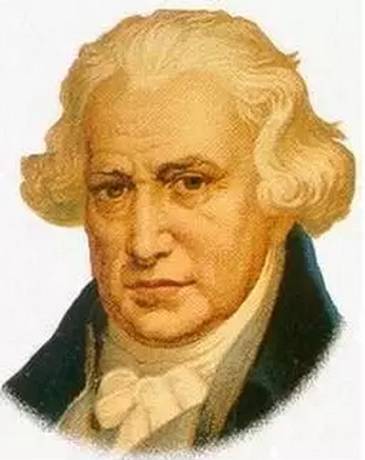
Watt
It had ever been the commonly known that Watt invented steam engine. However, Engels’s opinion was more accurate, “The steam engine is the first real international invention”. Not to mention the exploration of the ancient Greeks and Da Vinci, French scientist Papin and British engineer Savery should be the forerunners of steam engines.
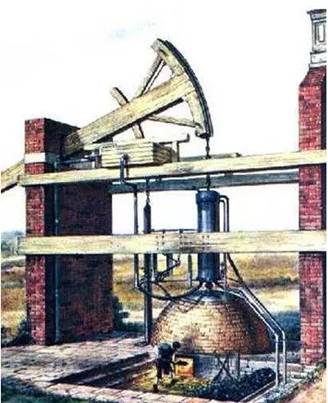
Newcomen’s steam engine
In 1712, an English blacksmith Newcome made the first practical steam engine in the history. This new kind of engine were used for some years in the draining of mines and in raising water to power waterwheels, and used for more than half a century. When the water in boiler became steam with 1600 times of expansion and filled the cylinder, turn off the valve. Then cool the cylinder to have the vacuum through water spray, and atmospheric pressure will push the piston to work. However, the repeatedly cooling and reheating the cylinder at each stroke wasted a great deal of energy.
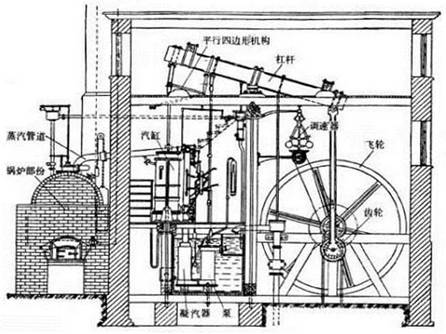
Watt improved Newcomen’s steam engine
In 1769, Watt greatly improved Newcomen’s engine while working as an instrument maker at University of Glasgow. Watt introduced a design enhancement, the separate condenser, which ensured the cylinder to work at a constant temperature and dramatically improved the thermal efficiency by 6 times. During the next 10 years, Watt persevered and perfected the steam engine for 5 times successively. He turned the reciprocating motion of the piston to rotary motion through epicyclic gear and inertial flywheel, and used a parallel quadrilateral motion bar to turn the unidirectional work of the cylinder to bi-directional work like Chinese bellows. He used barrel-like boring mill for precision finishing so as to reduce gas leaking, and also installed boiler pressure gauge. He controlled the intake gate with the negative feedback function of centrifugal governor to keep the stable output of the steam engine. As the earliest attempt of automatic control in mechanical engineering, this engine had special theoretical and practical significance.
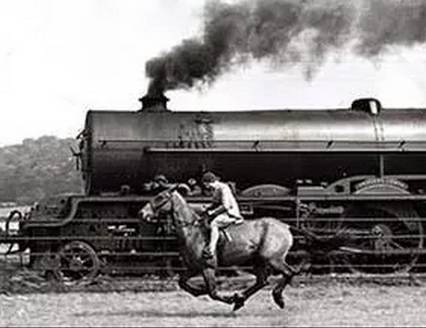
“Horsepower” is the product of Watt’s thinking for the popularization of science. In order to tell people how much strength a steam engine is, there should be a visualizable analogy and conversion, and the most suitable reference is obviously a horse. Watt measured that the distance of a horse walking in a standard mill for one round was 75.4 feet, a horse could walk 2.4 rounds in a minute, and the average load was 180 pounds. After calculating, it came to the conclusion that “the output power of a horse to pull 33,000 pounds and walk for one foot per minute” was 1 “horsepower”. In 1882, SIEMENS proposed that the power unit be designated as Watt which has been using till now. The research and improvement of steam engines directly gave birth to “thermodynamics”, and people stopped taking phlogiston as a substance in metal, wood, water, fire and soil. In addition, people also found the “latent heat” in the process of vaporization and liquefying of water, and the “specific heat” of different substances with temperature rising by 1 degree.
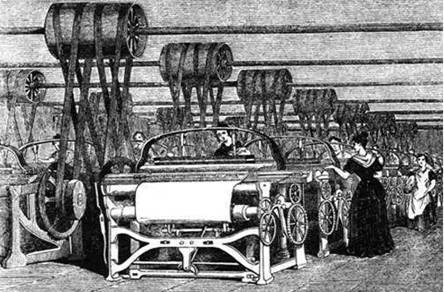
A textile machine driven by Watt’s steam engine
Thinking in every age can only be decided by the things that were thought during that age. French scientist Kano put forward the thermodynamic cycle theory, and Joule, Kelvin and Clausius established the first and second laws of thermodynamics, which were all the flowers of scientific theories under the extensive steam engines practice.
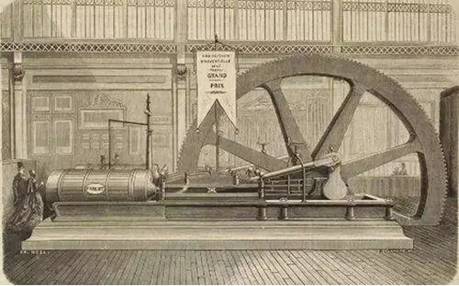
Farcot Steam engine obtained the award at Expo 1867 Paris
Tireless heart: Corliss steam engine
The supreme honor and greatest glory of the steam engine family might be nothing more than Corliss steam engines exhibited at 1876 Philadelphia Centennial Exposition. The steam engines made by American engineer Corliss had been famous early at Expo 1867 Paris and Expo 1873 Vienna. This time he donated 1876 Philadelphia Centennial Exposition a 1,400 hp steam engine that was the largest one in the world, and it weighted 56 tons, and was 14 meters higher than shoulder-tall double cylinders, and its giant flywheel was 9.1 meters in diameter.
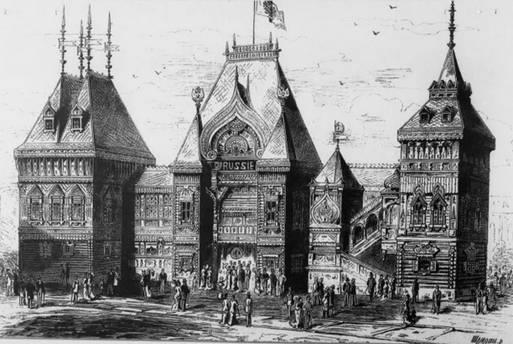
1876 Philadelphia Centennial Exposition
In the afternoon of May 10, the 50,000 square-meter machinery pavilion was full of people. After a choir and a military band performed, and 100 guns were fired as a salute, President Grant of the United States and Emperor Pedro II of Brazil, accompanied with Corliss, boarded onto a 5-meter tall platform in the middle of the machinery pavilion. They jointly held the handhold of Corliss steam engine to start the giant monster, and declared the official opening of the Philadelphia Centennial Exposition. In an instant, all the numerous big and small machines woke up together, whose energy all came from the kilometers connecting rods and belts driven by Corliss steam engine.
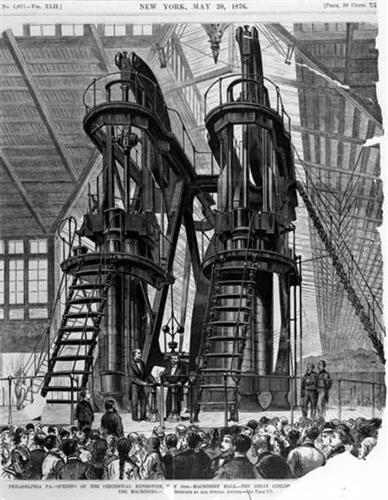
President of the United States and Emperor of Brazil started Corliss steam engine
at 1876 Philadelphia Centennial Exposition
The flywheels of Corliss steam engine was quietly rotating at 36 rounds per minute during the six months of 1876 Philadelphia Centennial Exposition, with a sound even lower than a sewing machine. A watchman could sit by its side, and read newspaper leisurely. It stopped in a sudden until the President announced the closing of the World Expo on November 10. Corliss steam engine was the tireless heart of the machinery pavilion, and an undiminished torch of the Exposition. Many newspapers regarded it as the incarnation of American power and technology. Musicians specifically composed a song named Corliss March. Famous poet Whitman was deeply infected with it, and he moved a chair over, sat in front of the steel athlete, and then watched it for half an hour.
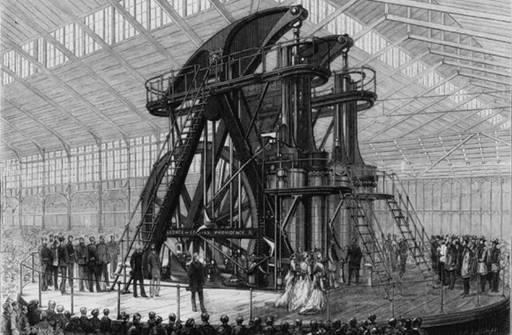
“Tireless heart”
One of the important contributions of 1876 Philadelphia Centennial Exposition is that it determined the advanced standard of “boiler horsepower”.Before this, the steam engine industry defined the power of a boiler as the power of 1 boiler at 10 square feet of heating area, which could not well reflect to the actual efficiency of the boiler. The judges of 1876 Philadelphia Centennial Exposition established a new standard and defined the boiler horsepower as “the saturated vapor generated in one hour when converting 30 pounds of water at 100 degrees Fahrenheit into saturated vapor of 1 square inch with 70 pounds of pressure”. The boiler room in the Exposition could be regarded as a sample. There were 20 boilers orderly arranged, 70 horsepower of each boiler. The pipes connecting down to underground pipeline to the exhibition area were 100 meters long and 46 centimeters in diameter. With a powerful and efficient boiler, the steam engine showed its great confidence.

Expo 1873 Vienna
Machinery Pavilion driven by Corliss steam engine with belts and connecting rods
The steam engine worked together with various kinds of machines. It was the portrayal and epitome of the social production, and it was able to do all labor work. Numerous textile factories, steel mills, wood factories, paper mills and printing shops did not need to be built by rivers any longer, because squeaky turbines were replaced by efficient steam turbines. Door-to-door service was offered by mobile and portable steam engines, undertaking the tasks of excavation, lifting, drilling, fire fighting, and so on.

Agricultural machinery driven by steam engines exhibited at Expo 1867 Paris
The plough could not be pulled forward by dozens of horses in the past, but now steam engines turned thousands miles of wilderness into a virgin land, “making Buffalo Prairie the breakfast of American people”. Harvesters, threshers and cotton gins also got into the fields successively. That was an age of enthusiastic steam engine.
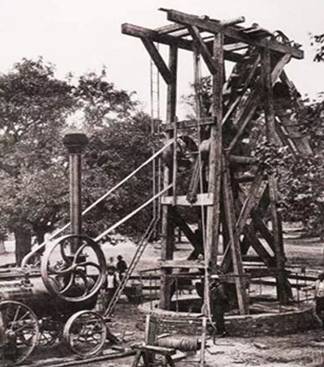
Pumping water with steam engine exhibited at Expo 1873 Vienna
By 1888, the United States had already owned 14.4 million hp steam engines, and the United Kingdom had 9.20 million hp steam engines.
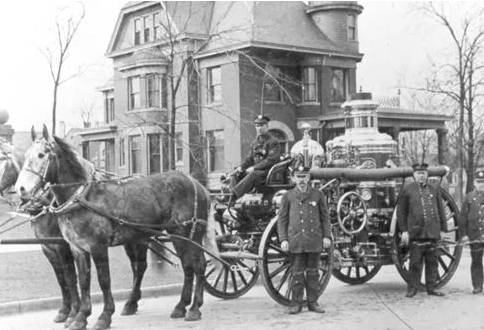
The first steam engine fire truck in Michigan in 1883
There has never been such a sharp turn and a sudden acceleration in human civilization.
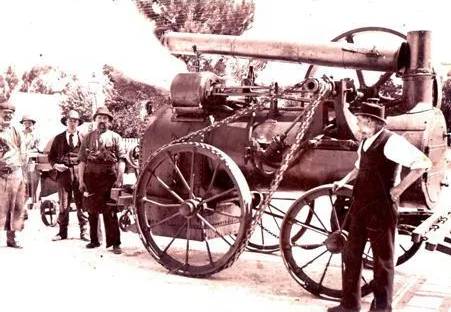
Mobile steam engine in 1890
